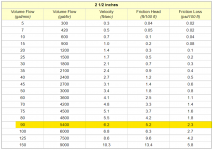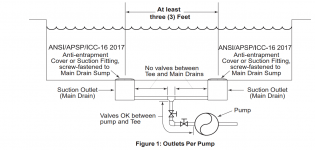- Apr 12, 2022
- 51
- Pool Size
- 10000
- Surface
- Plaster
- Chlorine
- Salt Water Generator
- SWG Type
- Jandy Truclear / Ei
My PB has his workers over to plumb the main drain (just in the shell). I don't believe these guys are actual plumbers as they didn't know some of the answers to basic questions I was asking.
It didn't seem like there was any thought put into using a sweep vs hard 90... more of what came out of the box or they could find on the truck.
On the pool side, what i noticed was the use of hard 90s right where the drain cover would go. Also used where to pipe transitions from floor to wall. Any concerns with headloss from this?
On the spa side (7x7), i was advised to put one floor drain and one bench. mostly hard 90s here except where you have back to back sweeps and one at the top. Seems like a lot hard turns but I don't want to make a mountain out of a molehill.
How much less efficient did my pool get or does it not matter? 2.5" suction lines.
It didn't seem like there was any thought put into using a sweep vs hard 90... more of what came out of the box or they could find on the truck.
On the pool side, what i noticed was the use of hard 90s right where the drain cover would go. Also used where to pipe transitions from floor to wall. Any concerns with headloss from this?
On the spa side (7x7), i was advised to put one floor drain and one bench. mostly hard 90s here except where you have back to back sweeps and one at the top. Seems like a lot hard turns but I don't want to make a mountain out of a molehill.
How much less efficient did my pool get or does it not matter? 2.5" suction lines.
Last edited:














